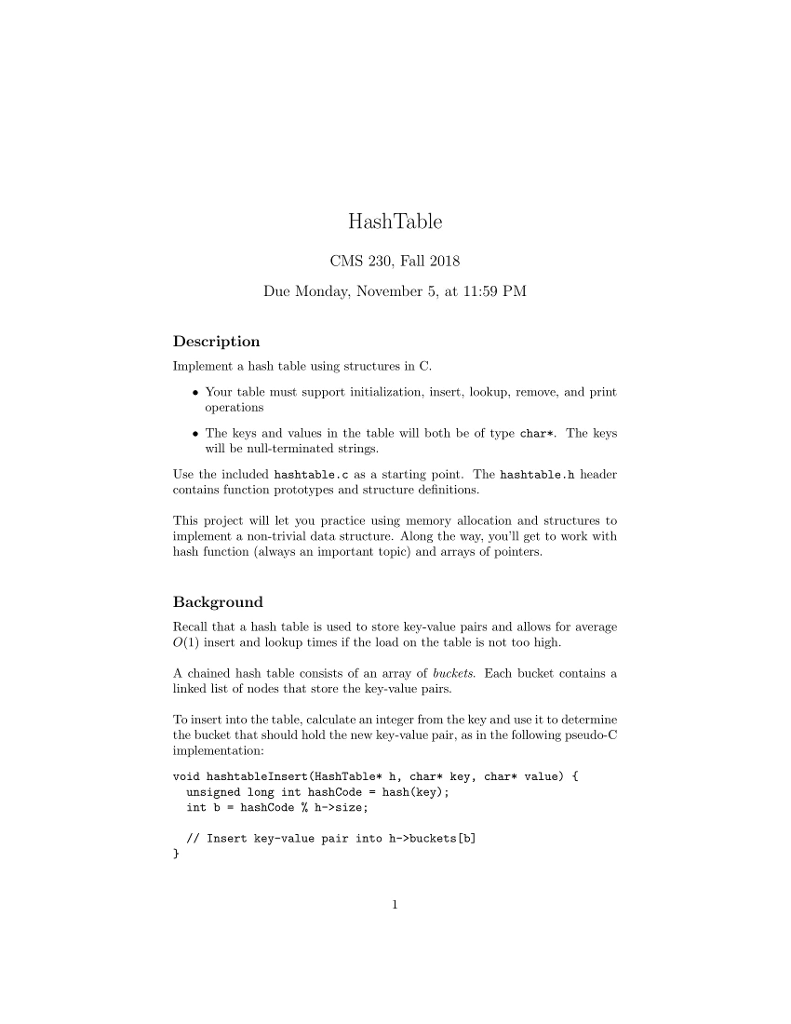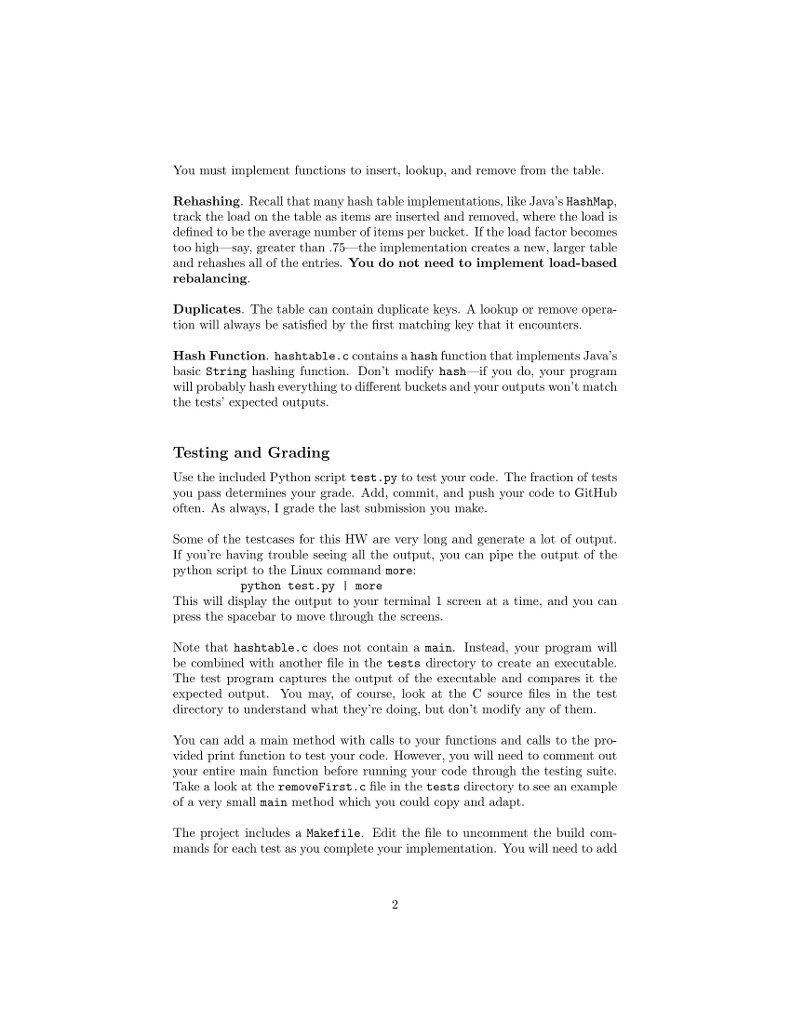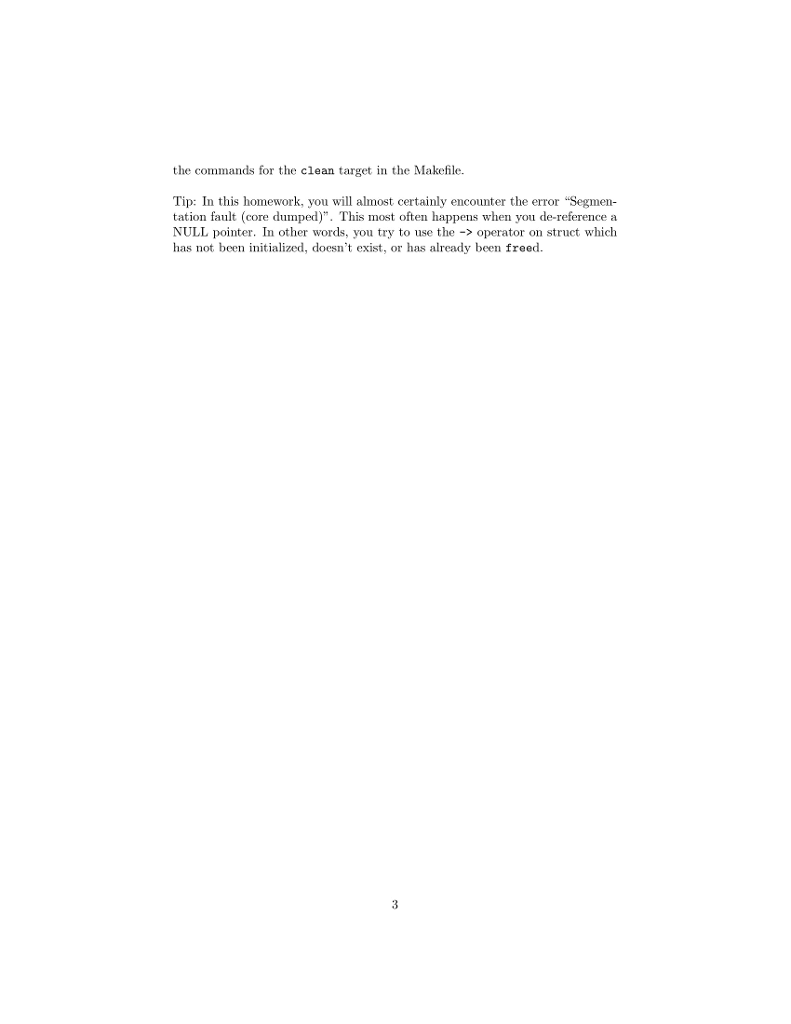Question
########################################################## hashtable.c // HashTable Implementation Starter Code // CMS 230, 2017 #include #include #include // Hashtable struct definitions and function prototypes #include hashtable.h //*** Hash



##########################################################
hashtable.c
// HashTable Implementation Starter Code // CMS 230, 2017
#include
// Hashtable struct definitions and function prototypes #include "hashtable.h"
//*** Hash a string to an integer ***// // Input // char *s: the string to hash // Returns // The integer hash code // // Implements the basic hashing String hashing algorithm used by Java. unsigned long int hash(char *s) { unsigned long int h = 0;
int i; for (i = 0; i
return h; }
//*** Create a new hashtable_t ***// // Input // tableSize: the number of buckets in the new table // Returns // A pointer to the new table HashTable * hashtableInit(int tableSize) {
// Allocate memory for a new HashTable
// Allocate memory for an array of buckets and assign // them to the table's buckets field
// Set the new HashTable's size field
// Return the new HashTable
}
//*** Insert a key-value pair into a table ***// // Inputs // hashtable *h: the hashtable performing the insertion // char *key: the key string // char *value: the value string // Returns // Nothing void hashtableInsert(HashTable *h, char *key, char *value) {
}
//*** Lookup the value associated with a particular key ***// // Inputs // hashtable_t *h: the table // char *key: the key to find // Returns // The char *value associated with the key or NULL if no match exists char * hashtableLookup(HashTable *h, char *key) {
}
//*** Remove a key-value pair from the table if it exists ***// // Inputs // hashtable_t *h: the table // char *key: the key to find and remove // Returns // The char *value associated with the key or NULL if no match exists // The pair is removed if it exists in the table char * hashtableRemove(HashTable *h, char *key) {
}
//*** Print a hashtable ***// // Input // hashtable_t *h: the table // Output // the hashtable, printed by buckets void hashtablePrint(HashTable *h) { int i; for (i = 0; i size; i++) { HashNode *node = h->buckets[i]; printf("Contents of bucket %d: ", i);
while (node != NULL) { printf(" ", node->key, node->value); node = node->next; } } }
//*** There is no main function --- use the Python test script ***//
##########################################################
hashtable.h
//*** Structure definitions ***//
typedef struct _hashnode_t {
char* key;
char* value;
struct _hashnode_t* next;
} HashNode;
typedef struct _hash_t {
// Each bucket is a linked list accessed by a HashNode* pointer
// The table itself has an array of buckets, which is equivalent to an array
// of HashNode*; this is implemented using HashNode**.
HashNode** buckets;
// The number of buckets in the table
int size;
} HashTable;
//*** Function prototypes ***//
unsigned long int hash(char*);
HashTable* hashtableInit(int);
void hashtableInsert(HashTable*, char*, char*);
void hashtablePrint(HashTable*);
char* hashtableRemove(HashTable*, char*);
char* hashtableLookup(HashTable*, char*);
Hash Table CMS 230, Fall 2018 Due Monday, November 5, at 11:59 PM Description Implement a hash table using structures in C . Your table must support initialization, insert, lookup, remove, and print operations . The keys and values in the table wil both be of type char*. The keys wil be null-terminated strings. Use the included hashtable.c as a starting point. The hashtable.h header contains function prototypes and structure definitions. This project will let you practice using memory allocation and structures to implement a non-trivial data structure. Along the way, you'll get to work witlh hash function (always an important topic) and arrays of pointers. Background Recall that a hash table is used to store key-value pairs and allows for average O(1) insert and lookup times if the load on the table is not too high. A chained hash table consists of an array of buckets. Each bucket contains a linked list of nodes that store the key-value pairs To insert into the table, calculate an integer from the key and use it to determine the bucket that should hold the new key-value pair, as in the following pseudo-C implementation: void hashtableInsert (HashTable* h, char* key, char* value) f unsigned long int hashCode- hash(key) int b hashCode % h->size; / Insert key-value pair into h->buckets [b]Step by Step Solution
There are 3 Steps involved in it
Step: 1

Get Instant Access to Expert-Tailored Solutions
See step-by-step solutions with expert insights and AI powered tools for academic success
Step: 2

Step: 3

Ace Your Homework with AI
Get the answers you need in no time with our AI-driven, step-by-step assistance
Get Started


